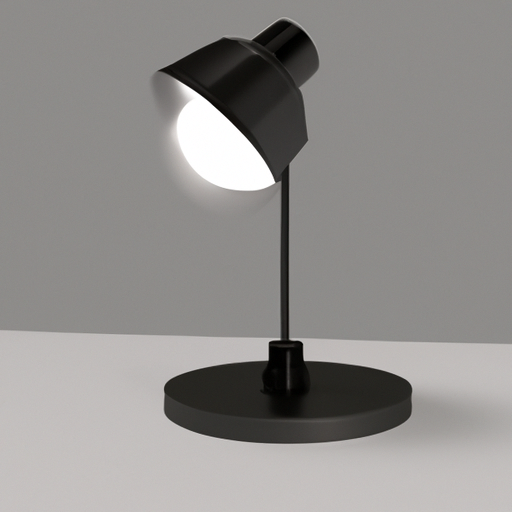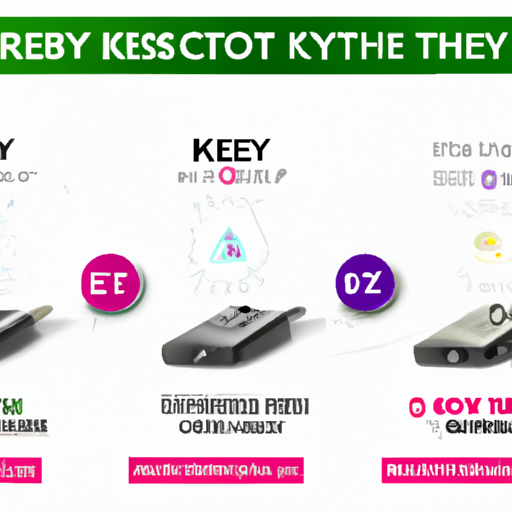
Visible light products have become increasingly popular in recent years, with more and more consumers looking for ways to enhance their home or office lighting. Mainstream visible light products offer a wide range of options to suit different needs and preferences, from smart bulbs to decorative lighting fixtures. In this article, we will explore the parameters that define mainstream visible light products and how they can be used to create a unique and personalized lighting experience.One of the key parameters that define mainstream visible light products is their compatibility with existing lighting systems. Many consumers are looking for products that can easily be integrated into their current setup without the need for extensive rewiring or installation. This is where smart bulbs and other connected lighting solutions come into play, offering users the ability to control their lights remotely through a smartphone app or voice commands.Another important parameter is the color temperature of the light emitted by the product. Color temperature is measured in Kelvin (K) and refers to the warmth or coolness of the light. Most mainstream visible light products offer a range of color temperatures to suit different moods and settings, from warm white for a cozy atmosphere to cool white for a more energizing and productive environment.Brightness is another key parameter to consider when choosing visible light products. The brightness of a light source is measured in lumens, with higher lumens indicating a brighter light. Mainstream visible light products typically offer a range of brightness levels to suit different needs, from dimmable bulbs for ambient lighting to high-intensity fixtures for task lighting.Energy efficiency is also an important parameter to consider when choosing visible light products. With the increasing focus on sustainability and energy conservation, many consumers are looking for products that are energy-efficient and environmentally friendly. LED lighting, in particular, has become a popular choice for its long lifespan and low energy consumption, making it a cost-effective and eco-friendly option for mainstream visible light products.In addition to these parameters, design and aesthetics play a significant role in the popularity of mainstream visible light products. Consumers are increasingly looking for lighting solutions that not only provide functionality but also enhance the overall look and feel of their space. From sleek and modern designs to vintage-inspired fixtures, there is a wide range of options available to suit different styles and preferences.One of the key advantages of mainstream visible light products is their versatility and adaptability. Whether you are looking to create a cozy and inviting atmosphere in your living room or a bright and energizing workspace in your office, there are visible light products available to suit your needs. With the ability to customize color temperature, brightness, and even control settings, consumers can easily create a personalized lighting experience that enhances their space and improves their overall well-being.In conclusion, mainstream visible light products offer a wide range of options to suit different needs and preferences, from smart bulbs to decorative lighting fixtures. By considering parameters such as compatibility, color temperature, brightness, energy efficiency, and design, consumers can choose visible light products that enhance their space and create a unique and personalized lighting experience. Whether you are looking to create a cozy ambiance in your home or a productive workspace in your office, there are visible light products available to help you achieve your lighting goals.

Ultraviolet (UV) light is a form of electromagnetic radiation that is invisible to the human eye. It is commonly used in various industries for sterilization, disinfection, and curing processes. In recent years, there has been a growing demand for UV products due to their effectiveness in killing bacteria, viruses, and other pathogens. However, in order to ensure the safety and efficacy of these products, there are certain standards that must be met.One of the most important product standards for UV products is the wavelength range. UV light is divided into three main categories based on wavelength: UV-A (315-400 nm), UV-B (280-315 nm), and UV-C (100-280 nm). UV-C light is the most effective for disinfection purposes as it has the shortest wavelength and highest energy. Therefore, UV products intended for sterilization and disinfection should emit UV-C light within the specified wavelength range.Another important product standard for UV products is the irradiance level. Irradiance refers to the amount of UV light that is emitted by a source and is typically measured in watts per square meter (W/m2). The irradiance level of a UV product should be sufficient to achieve the desired disinfection or curing effect. It is important to note that higher irradiance levels do not necessarily equate to better performance, as other factors such as exposure time and distance from the source also play a role.In addition to wavelength range and irradiance level, there are other product standards that must be met for UV products to ensure their safety and effectiveness. These include:1. Exposure time: The amount of time that an object or surface needs to be exposed to UV light in order to achieve the desired disinfection effect. This can vary depending on the type of pathogen being targeted and the intensity of the UV light.2. Safety features: UV products should be equipped with safety features such as automatic shut-off mechanisms, warning indicators, and protective shields to prevent accidental exposure to UV light.3. Compliance with regulatory requirements: UV products must comply with relevant regulatory standards and guidelines, such as those set forth by the Food and Drug Administration (FDA) or the International Electrotechnical Commission (IEC).4. Quality control measures: Manufacturers of UV products should implement quality control measures to ensure that their products meet the specified standards and perform as intended.Overall, product standards for UV products are essential to ensure their safety, efficacy, and reliability. By adhering to these standards, manufacturers can provide consumers with high-quality UV products that deliver the desired disinfection and curing effects. As the demand for UV products continues to grow, it is important for manufacturers to stay informed about the latest standards and regulations in order to meet the needs of their customers and maintain a competitive edge in the market.

Infrared radiation, also known as IR radiation, is a type of electromagnetic radiation that is invisible to the human eye. It has a longer wavelength than visible light, ranging from about 700 nanometers to 1 millimeter. Infrared radiation is commonly used in various applications, including heating, communication, and imaging.There are several mainstream models of infrared radiation that are used to describe its behavior and properties. These models help scientists and engineers understand how infrared radiation interacts with matter and how it can be utilized in different applications. In this article, we will discuss some of the most commonly used models of infrared radiation.1. Blackbody Radiation ModelThe blackbody radiation model is one of the most fundamental models of infrared radiation. It describes the radiation emitted by a perfect blackbody, which is an idealized object that absorbs all incident radiation and emits radiation at all wavelengths. According to this model, the intensity of radiation emitted by a blackbody at a given wavelength is determined by its temperature and follows a specific spectral distribution known as Planck's law.Planck's law describes the spectral radiance of a blackbody as a function of wavelength and temperature. It shows that the intensity of radiation increases with temperature and peaks at a specific wavelength determined by the temperature of the blackbody. This model is widely used in infrared spectroscopy and thermal imaging to analyze the radiation emitted by objects at different temperatures.2. Stefan-Boltzmann LawThe Stefan-Boltzmann law is another important model of infrared radiation that describes the total amount of radiation emitted by a blackbody at a given temperature. It states that the total power radiated by a blackbody is proportional to the fourth power of its temperature, as expressed by the equation:P = σT^4Where P is the total power radiated, σ is the Stefan-Boltzmann constant, and T is the temperature of the blackbody. This law is used to calculate the total amount of infrared radiation emitted by objects at different temperatures and is essential for understanding the thermal behavior of materials.3. Kirchhoff's Law of Thermal RadiationKirchhoff's law of thermal radiation states that the ratio of the emissivity of a material to its absorptivity is equal to one at thermal equilibrium. In other words, a material that absorbs infrared radiation well also emits radiation well at the same wavelength. This law is crucial for understanding the interaction of infrared radiation with different materials and is used in the design of infrared sensors and detectors.4. Wien's Displacement LawWien's displacement law describes the relationship between the peak wavelength of radiation emitted by a blackbody and its temperature. It states that the peak wavelength of radiation is inversely proportional to the temperature of the blackbody, as expressed by the equation:λ_max = b/TWhere λ_max is the peak wavelength, b is Wien's displacement constant, and T is the temperature of the blackbody. This law is used to determine the temperature of objects based on the peak wavelength of their infrared radiation and is essential for thermal imaging and remote sensing applications.5. Beer-Lambert LawThe Beer-Lambert law describes the absorption of infrared radiation by a material as it passes through a medium. It states that the intensity of radiation decreases exponentially with the thickness of the material and the concentration of absorbing molecules, as expressed by the equation:I = I_0e^(-αc)Where I is the intensity of radiation after passing through the material, I_0 is the initial intensity, α is the absorption coefficient of the material, c is the concentration of absorbing molecules, and e is the base of the natural logarithm. This law is used in infrared spectroscopy to quantify the concentration of molecules in a sample based on their absorption of infrared radiation.In conclusion, there are several mainstream models of infrared radiation that are used to describe its behavior and properties. These models, including the blackbody radiation model, Stefan-Boltzmann law, Kirchhoff's law of thermal radiation, Wien's displacement law, and Beer-Lambert law, are essential for understanding how infrared radiation interacts with matter and how it can be utilized in various applications. By studying these models, scientists and engineers can develop new technologies and improve existing ones that rely on the unique properties of infrared radiation.

LED transmitters are a crucial component in the world of technology, enabling the transmission of data through light signals. These devices are used in a wide range of applications, from telecommunications to automotive systems. In this article, we will explore the key product categories of LED transmitters and their importance in various industries.1. Visible Light Communication (VLC) TransmittersOne of the most common applications of LED transmitters is in visible light communication (VLC) systems. These systems use light signals to transmit data, providing a secure and efficient way to transfer information. VLC transmitters are used in indoor positioning systems, Li-Fi technology, and other applications where traditional wireless communication methods may not be suitable.2. Infrared (IR) TransmittersInfrared LED transmitters are another important product category in the world of LED technology. These devices emit infrared light signals, which are commonly used in remote controls, security systems, and proximity sensors. IR transmitters are also used in optical communication systems, where they provide a reliable and cost-effective way to transmit data over short distances.3. High-Power LED TransmittersHigh-power LED transmitters are designed to emit intense light signals over long distances. These devices are used in applications such as outdoor lighting, automotive headlights, and industrial signaling systems. High-power LED transmitters are known for their durability and energy efficiency, making them a popular choice for demanding applications.4. Multi-Color LED TransmittersMulti-color LED transmitters are capable of emitting light signals in different colors, allowing for more versatile communication options. These devices are used in applications such as traffic lights, signage, and entertainment systems. Multi-color LED transmitters are often used in combination with color sensors to create dynamic and interactive lighting effects.5. UV LED TransmittersUV LED transmitters emit ultraviolet light signals, which are used in a variety of applications, including sterilization, water purification, and medical treatments. UV LED transmitters are known for their germicidal properties, making them an essential component in healthcare and sanitation systems. These devices are also used in industrial processes, such as curing adhesives and coatings.6. RGB LED TransmittersRGB LED transmitters are capable of emitting light signals in red, green, and blue colors, allowing for a wide range of color options. These devices are used in applications such as stage lighting, architectural lighting, and display systems. RGB LED transmitters are popular in the entertainment industry, where they are used to create vibrant and dynamic lighting effects.7. Laser LED TransmittersLaser LED transmitters are high-power devices that emit focused laser beams for long-distance communication. These devices are used in applications such as fiber optic communication, laser pointers, and laser scanning systems. Laser LED transmitters are known for their precision and reliability, making them a popular choice for critical communication systems.In conclusion, LED transmitters are a versatile and essential component in modern technology. From visible light communication systems to UV sterilization devices, these devices play a crucial role in a wide range of applications. By understanding the key product categories of LED transmitters, we can appreciate their importance in various industries and the innovative ways in which they are used to transmit data through light signals.